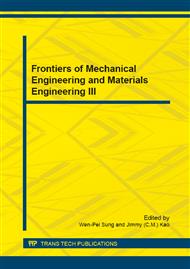p.660
p.666
p.670
p.675
p.683
p.687
p.692
p.697
p.701
A Derating Control Strategy Based on the Stator Temperature of PMSM
Abstract:
The derating control strategy for motor stator temperature is a very effective protection measures. It not only can make better use of motor ability but also can satisfy the requirement of the vehicle. This paper presents a derating control strategy based on the temperature of stator winding ends since it is the highest temperature point from the simulation results. The motor stator temperature is divided into several regions applied with the various derating control rules. To limit the peak phase current instead of the torque is proposed to inhibit the temperature rise especially in the field weakening region because a large extra demagnetizing current is required in this region.
Info:
Periodical:
Pages:
683-686
Citation:
Online since:
January 2015
Authors:
Keywords:
Price:
Сopyright:
© 2015 Trans Tech Publications Ltd. All Rights Reserved
Share:
Citation:


